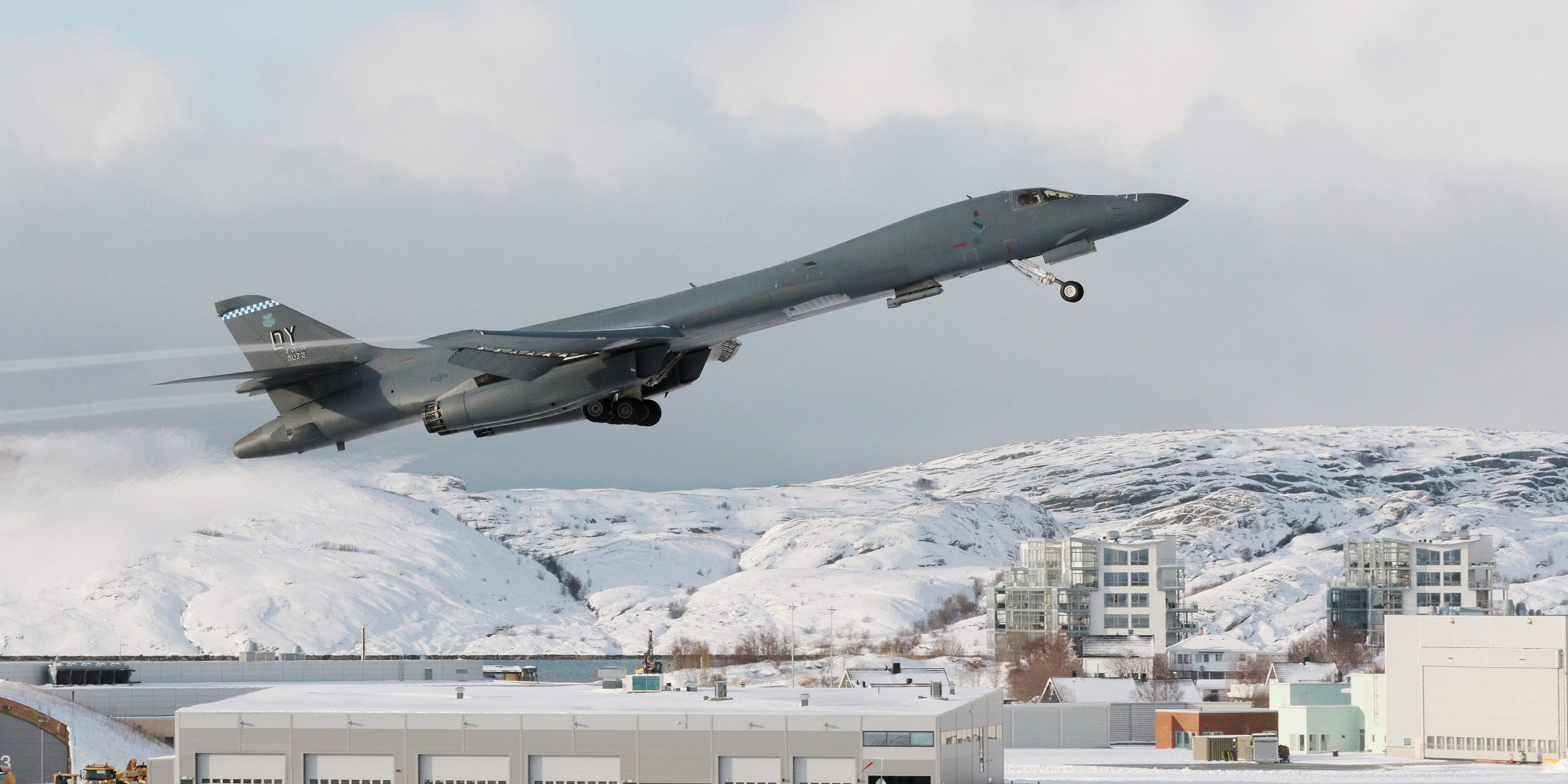
US Air Force
- US Air Force bombers deployed to Norway for the first time ever in late February.
- This week, those bombers trained with troops on the ground to conduct close air support.
- The deployment, and increased Arctic activity in general, comes amid high tensions between NATO and Russia.
- See more stories on Insider's business page.
US Air Force B-1B Lancer bombers that deployed to Norway in late February have already demonstrated their reach in the air around Europe, and this week they tested their ability to put bombs on target in new surroundings.
On March 8, a bomber conducted Joint Terminal Attack Controller training with US Navy SEALs, US Marines, and Norwegian soldiers near Setermoen in the Norwegian Arctic.
JTACs, as they're known, direct aircraft during close-air-support missions. For this training, US and Norwegian JTACs took position "on top of a mountain and quickly established communications" with the bomber to call in targets, a Marine Corps release said.
The exercise comes as NATO militaries have increased their focus on the European Arctic, conducting more ground, air, and naval operations there.
Joint JTAC training "demonstrates our commitment to building interoperability across military services and NATO allies," Capt. Joe Roberts, a JTAC instructor, said in the release.
'A little bit different'
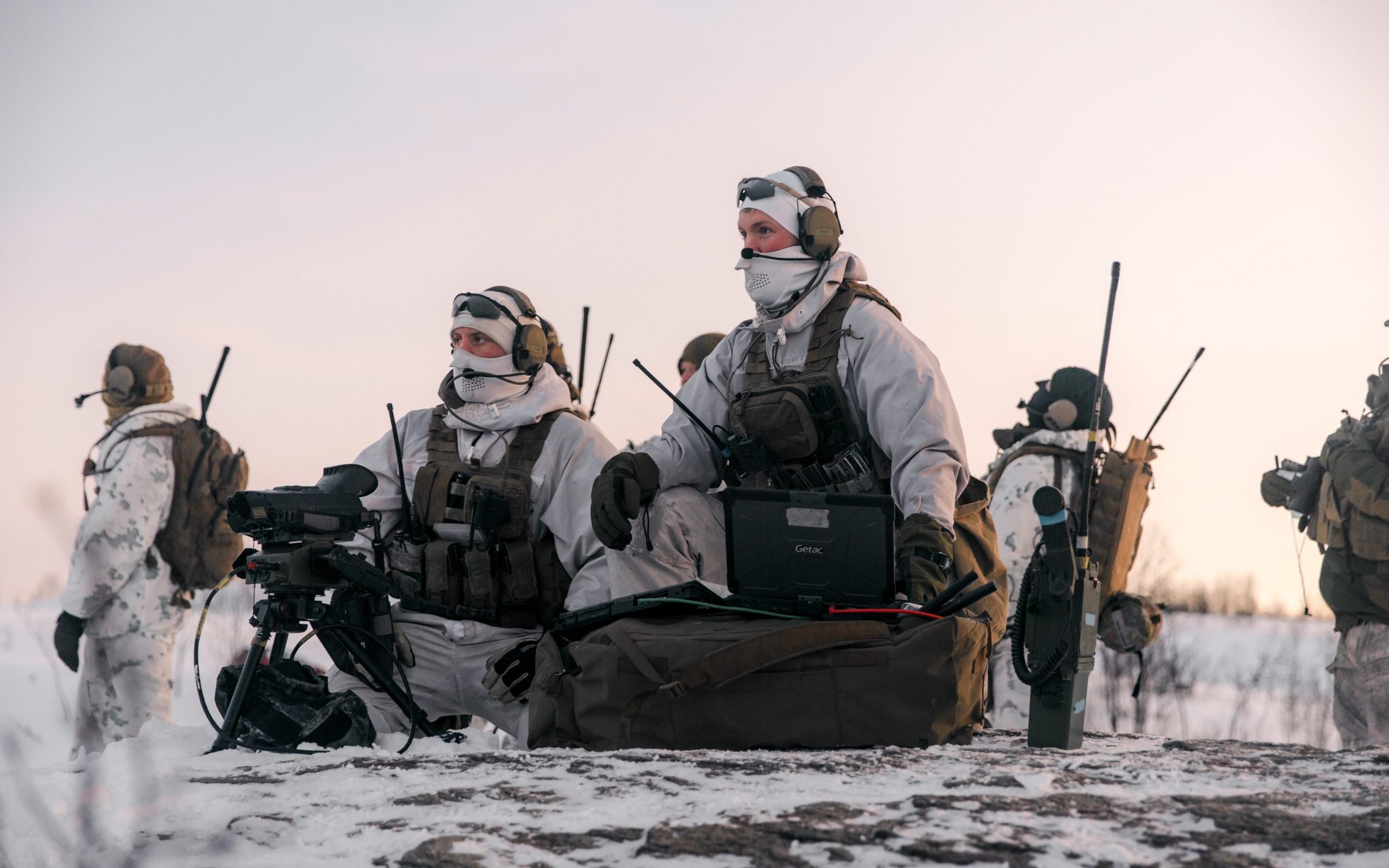
US Marine Corps/Lance Cpl. Patrick King
US bombers deploy to Europe and train with Norwegian aircraft regularly, but the four B-1Bs that arrived in Norway on February 22 are the first US bombers to deploy there.
"There's always something that's just a little bit different" at a new airfield, Lt. Gen. Steven Basham, deputy commander of US Air Forces in Europe and Africa, said during a March 5 briefing.
Changing scenery is particularly important for close air support, as working with JTACs or special-operations forces on the ground "allows that sensor on the ground to connect with the shooter, and in this case the bombers, to be able to practice dropping weapons in different environments," Basham said.
"I can tell you, as a B-1 pilot, that not all terrain looks the same; it has a different look on radar," Basham added. "Working with different individuals, there are always the unique challenges of accent or just the ability to make sure that we understand exactly what we're doing."
Marines rotated through Norway for on-the-ground training - including familiarization with the language barrier - from 2017 to late 2020, when the Corps said that training would move to an "episodic" model.
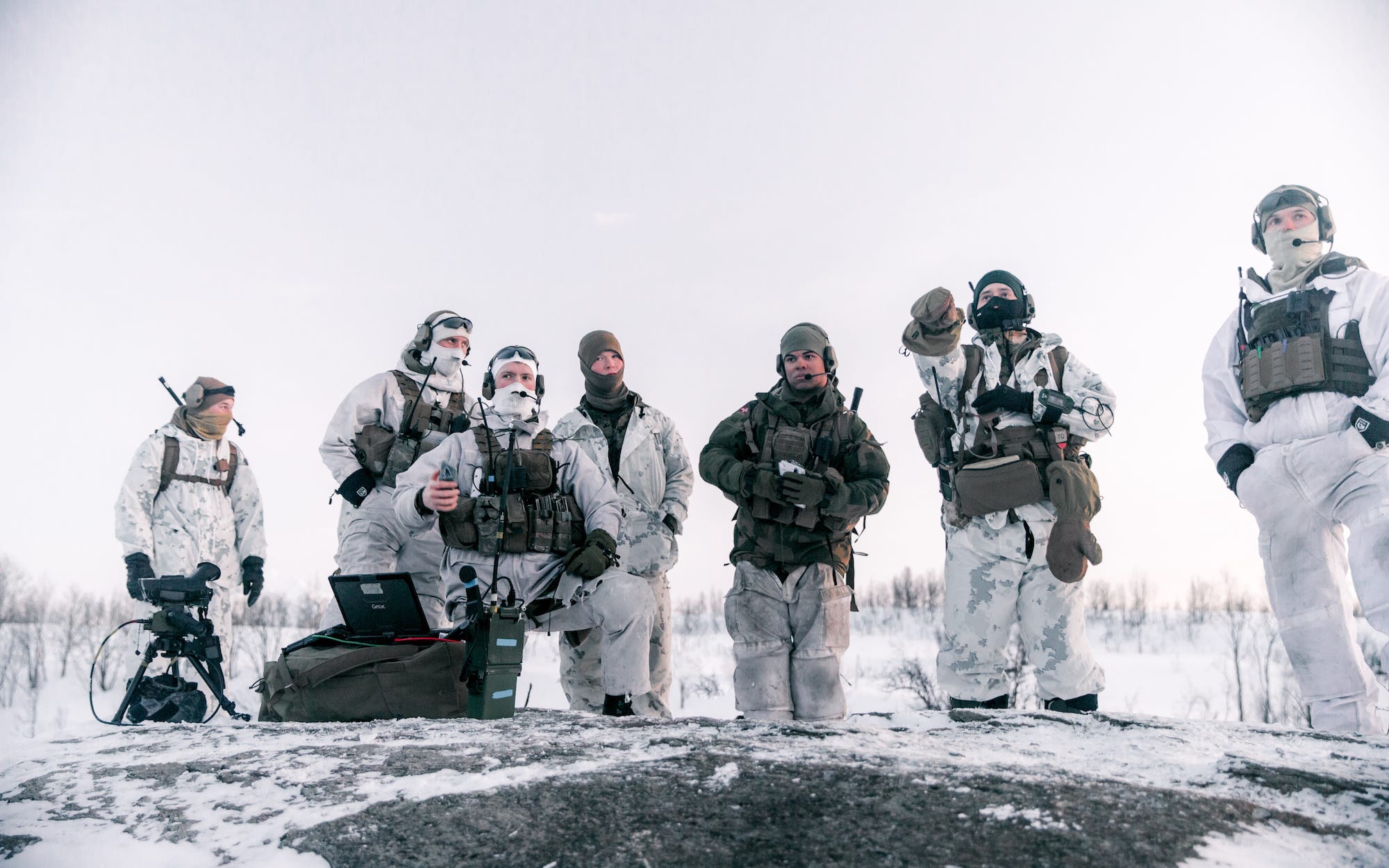
US Marine Corps/Lance Cpl. Patrick King
The Marines' training focused on preparing for harsh Arctic conditions, which is also a goal of the B-1B deployment and of the JTAC training.
"Operating from Norway gives a very unique opportunity to operate in a cold-weather environment," Basham said.
During the JTAC exercise, the B-1B landed at Bodo Air Force Station in the Norwegian Arctic for "warm-pit refueling," in which the crew stays in the cockpit during refueling, allowing the bomber to get back in the air faster.
Operations like warm-pit refueling are central to the Air Force's Agile Combat Employment concept, which is meant to prepare aircraft and crews for more dispersed operations.
The bomber "does just fine in the cold weather," Basham said. "It's our great aviators and maintainers and support personnel who might not be as familiar with the rigors of the cold. Our Norwegian partners are helping us along in that."
The bomber circled the airfield for 45 minutes as "dense snow" was cleared so it could land, and for ground troops, Norway's Arctic "also poses many obstacles," including frostbite and mountainous terrain, "which can cause electronic communications issues," the Corps release said.
Sending a message
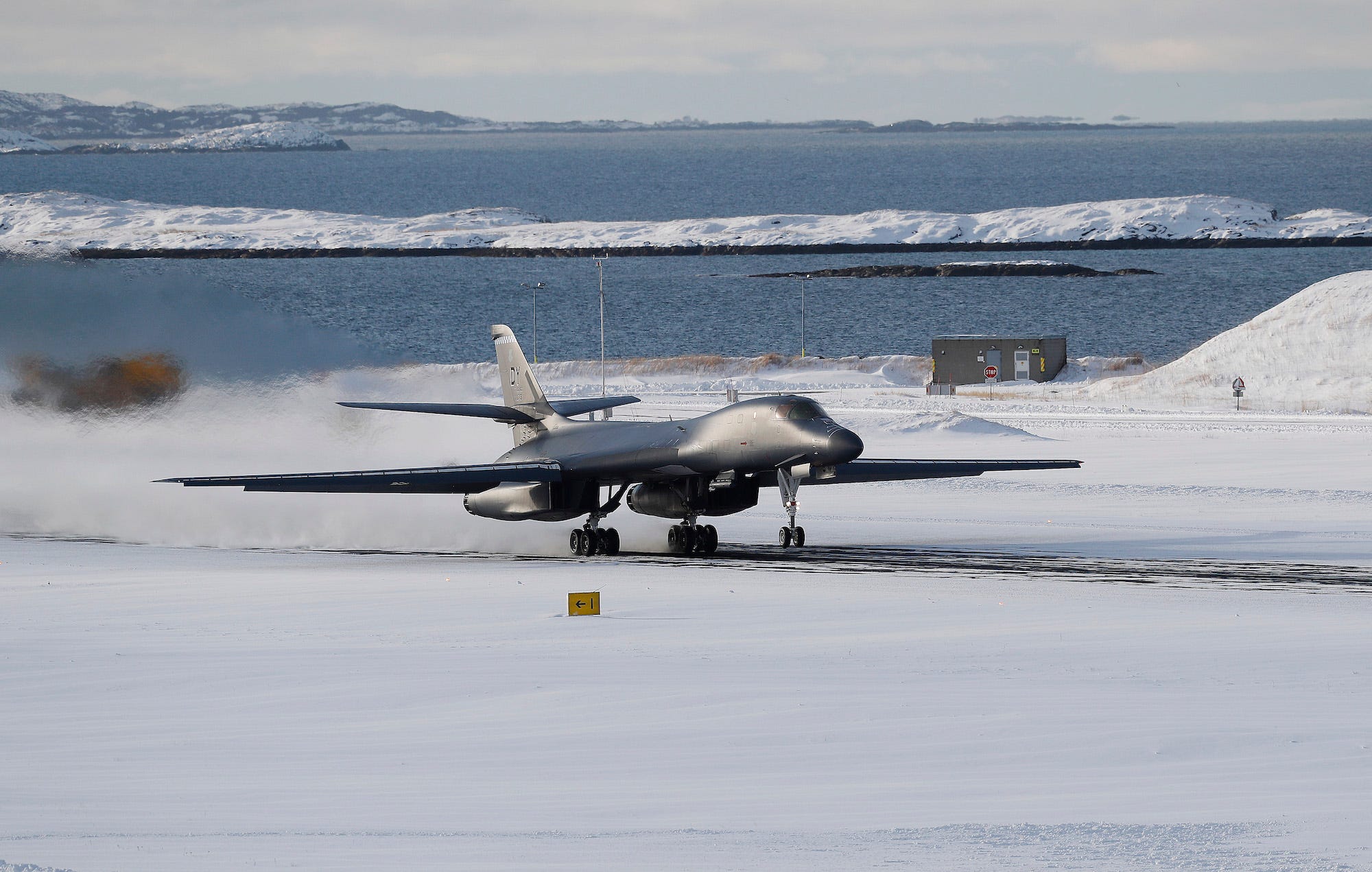
Norwegian Armed Forces
US and NATO activity in the Arctic comes amid heightened tensions with Russia, which has the world's longest Arctic coastline and extensive economic interests there. Moscow has also increased its military activity in the Arctic.
The Norway deployment reflects several shifts in US strategy, including increased support for NATO in response to Russia's 2014 incursion in Ukraine, which has led to "a gradual increase of bombers deploying to the UK at higher tempo and flying farther east and north," Hans Kristensen, director of the Nuclear Information Project at the Federation of American Scientists, told Insider.
Another shift is in Air Force bomber operations overseas, moving away from longer deployments in one place and toward shorter, more frequent deployments at more bases, which in Europe "has resulted in bomber operations to Iceland and now Norway, locations where the US did not deploy bombers even during the Cold War," Kristensen said.
Russia has major military installations in the Arctic, where aerial attack has long been a major concern.
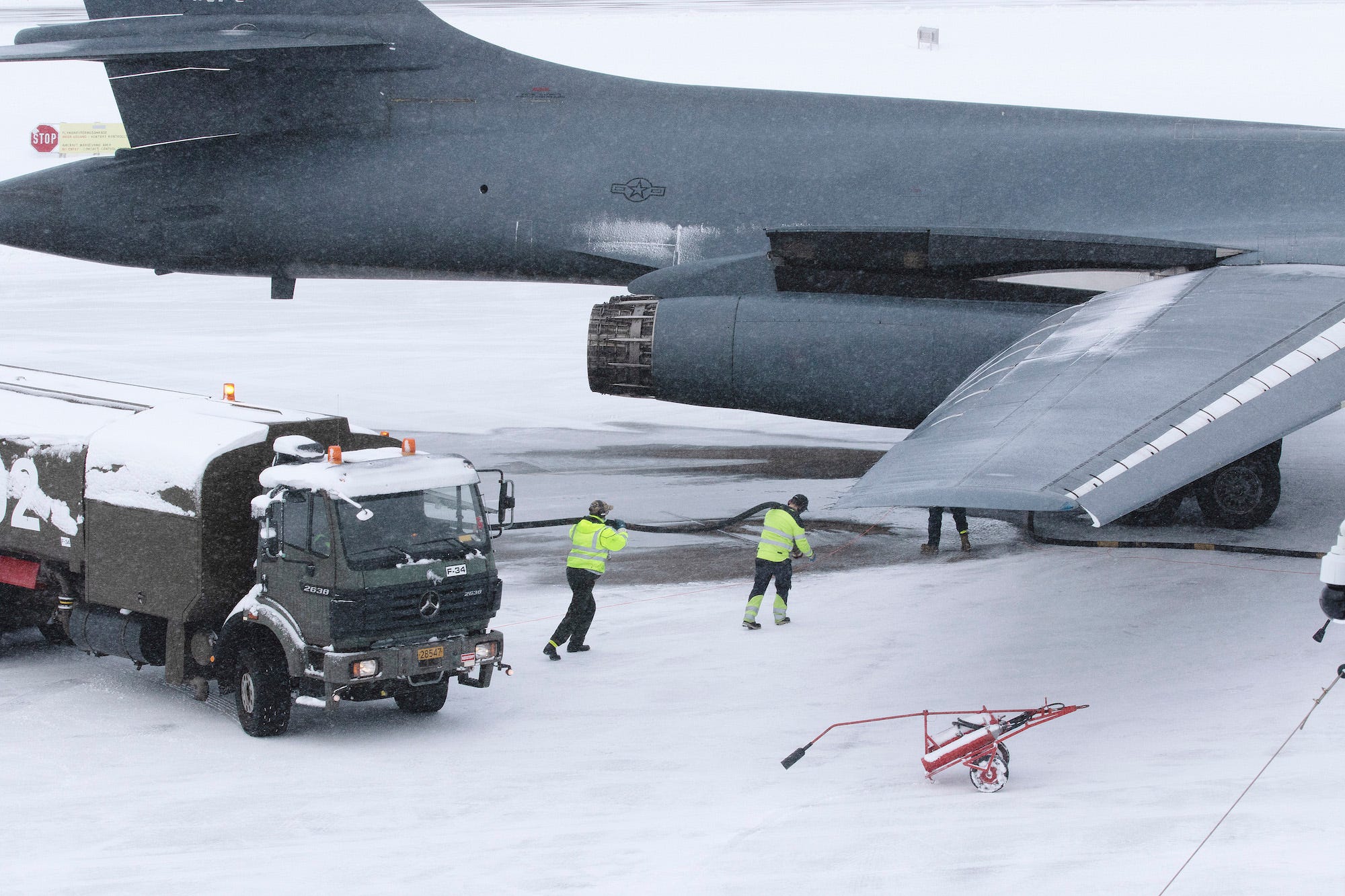
Norwegian Armed Forces
Moscow has already demonstrated its dismay about the B-1B deployment. On Friday, its Northern Fleet said carrier-based MiG-29K fighter jets had for the first time gone on "experimental combat duty" on the nearby Novaya Zemlya archipelago.
The Russians "seem to get the message" behind the increased US bomber deployments, Kristensen told Insider, "but there is so far no indication that it is causing them to back down."
"It's a lot more controversial in Norway, where officials have been busy explaining that the operations should not be seen as an increased threat to Russia," Kristensen added.
Lt. Gen. Yngve Odlo, chief of the Norwegian Joint Headquarters, stressed that point during the March 5 briefing.
"The communication is quite clear that this is what it is and it's not an offensive operation at all," Odlo said. "It's normal military activity between two close allies. The only special thing is the new asset being deployed to Norway."